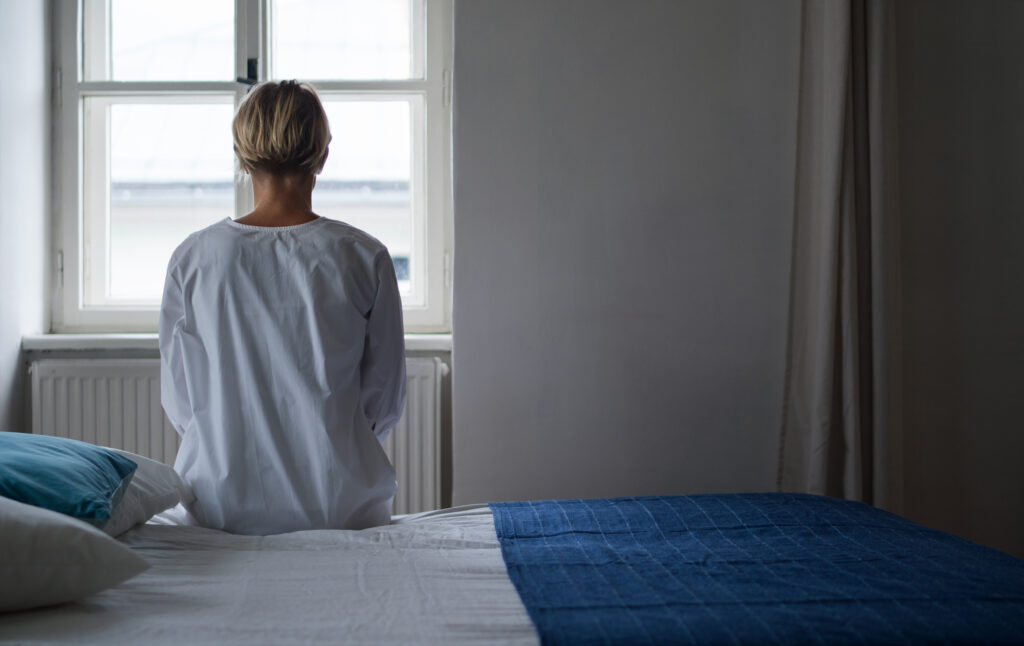A project to tackle seclusion and restraint in one Local Health District in New South Wales not only reduced these practices, but improved leadership and collaboration in the mental health units.
In the context of mental health care, seclusion occurs when a person is placed in a room alone and is unable to leave by themselves and restraint is when a person is physically held by staff to prevent them moving (here).
Seclusion and restraint are used when there are no other options to protect the safety of service users and staff in inpatient care settings. However, the use of these practices can potentially have harmful emotional and physical impacts on the people involved in these events, both directly and indirectly (here).
Seclusion and restraint have a negative impact on a person’s recovery during their inpatient stay and can infringe on human rights (here). They harm the relationships between staff and service users, eroding the potential for therapeutic engagement (here).
Minimising and, where possible, eliminating the use of seclusion and restraint is a key focus in mental health services across Australia. Health services require that alternative practices be used in situations where people’s behaviour is affecting the safety of themselves and/or other people in the care environment. For example, in New South Wales, The rates of seclusion and restraint are monitored in the key performance indicators for Australian Public Mental Health Services. The national seclusion rate (events per 1000 bed-days) halved from 14 in 2009–10 to seven in 2021–22 (here). The use of physical restraint (where staff use their hands or body to stop a person moving freely) has stayed consistent with ten to 12 events per 1000 bed-days since 2015–16 (here). Although the decline in seclusion rates over the past decade has been pleasing, both practices remain widespread across Australia’s mental health services.

The impact of a Seclusion and Restraint Prevention Plan
In 2020, the Illawarra and Shoalhaven Local Health District (ISLHD) developed a comprehensive project aimed at minimising the use of seclusion and restraint within its acute mental health care units. There are three units in this LHD: Wollongong Adult Acute Inpatient Unit, Eloura Adult Acute Inpatient Unit and the Mirrabook Adult Acute Inpatient Unit.
The mental health service prioritised six core strategic areas: workforce development, leadership, consumer involvement, post-incident debriefing, data utilisation, and prevention tools.
This project was developed at a time when the service had some of the highest rates of seclusion and restraint in New South Wales. Some months later, after the implementation of the project, it had some of the lowest.
The resultant plan sought to improve communication processes within the units. One key outcome was the establishment of daily multidisciplinary safety huddles, where staff discussed current safety issues, and weekly team reviews of incidents leading to seclusion and/or restraint. Efforts to collaborate with service users, their family members, and carers were intensified, supported by education for staff focused on increasing awareness of practice alternatives to seclusion and restraint.
Exploring the impact of this multilevel intervention
To evaluate the impact of these interventions, our team undertook research, conducting interviews with ISLHD staff (comprising two medical, three allied health and seven nursing staff members). Participants had experience with the service both before and after the interventions were implemented.
Our research also gathered reported incidents of seclusion and restraint in the units that occurred six months before the interventions and 12 months after they were put in place. Our analysis revealed significant differences in seclusion and restraint rates before and after the implementation, confirming the effectiveness of the interventions.
Improving collaboration and leadership
In their interviews, staff highlighted much improved collaboration and leadership in the units. The use of safety huddles and least restrictive care meetings improved how the multidisciplinary team functioned, contributing to a calmer and more therapeutic environment.
The people we interviewed identified that having engaged leadership played a key role in minimising seclusion and restraint on the units. They provided clear guidance and support, which increased staff morale.
One participant said “Middle management and senior management are all on board.” Another participant told us “I think the biggest thing for me is leadership. I think that’s really impacted on seclusion.”
Workforce development efforts resulted in an increased use of alternatives such as sensory modulation and verbal de-escalation. There was increased interest in skills development, and the focused education supported positive changes in practice to more person-centred approaches as seclusion and restraint rates decreased.
Overall, our research highlighted that the twelve participants identified that the interventions established a cultural shift away from the use of seclusion and restraint in the acute inpatient units.
Implications
A key outcome of the ISLHD’s Seclusion and Restraint Prevention Plan was its impact on team functioning. Multidisciplinary teamwork, commonly used in Australian inpatient units, can often lead to fragmentation in teams. The interventions developed through the plan contributed to greater team cohesion, engagement across disciplines, and strengthened working relationships.
The least restrictive care meetings and safety huddles nurtured mutual trust among staff and provided clear goals, dealing with the issue of role ambiguity often present in multidisciplinary teams.
These meetings encouraged regular staff reflection on practice. They facilitated practice improvement through multidisciplinary team support and learning, offering alternatives to seclusion and restraint.
Despite acknowledging limitations in terms of our study’s scale, the research underscores the effectiveness of Huckshorn’s six core strategy areas in promoting local interventions for practice and culture change.
We encourage managers and senior clinicians at other mental health units in Australia, who may be having difficulty in reducing the use of seclusion and restraint, to consider the positive outcomes of the project undertaken in ISLHD.
Luke Molloy is a Senior Lecturer in the School of Nursing, University of Wollongong.
Sizwile Havilla is a Clinical Nurse Consultant in Illawarra and Shoalhaven Local Health District Mental Health Service.
The statements or opinions expressed in this article reflect the views of the authors and do not necessarily represent the official policy of the AMA, the MJA or InSight+ unless so stated.
Subscribe to the free InSight+ weekly newsletter here. It is available to all readers, not just registered medical practitioners.
If you would like to submit an article for consideration, send a Word version to mjainsight-editor@ampco.com.au.

 more_vert
more_vert